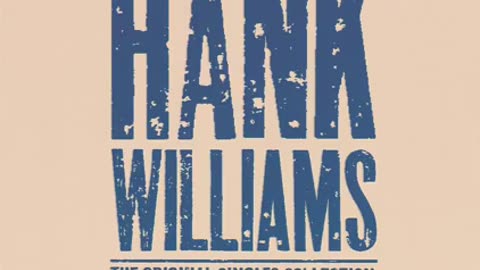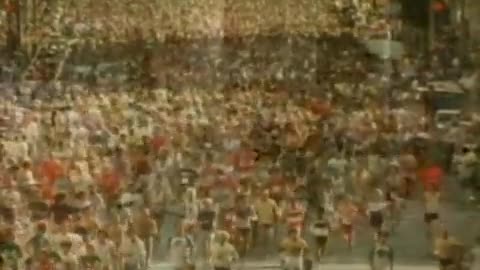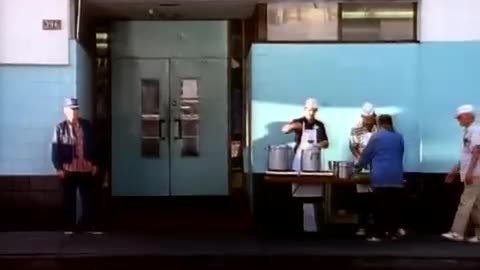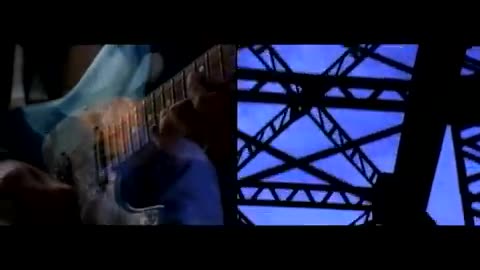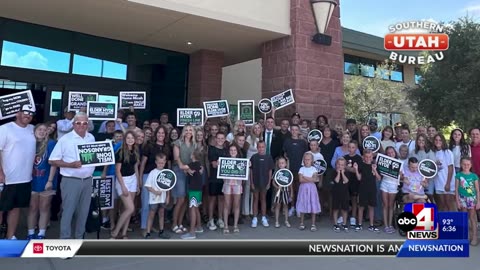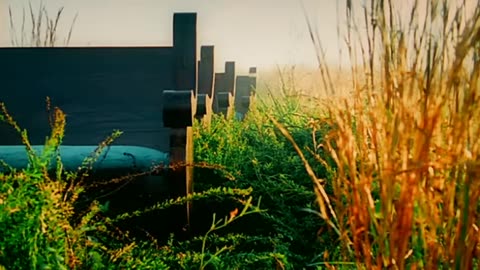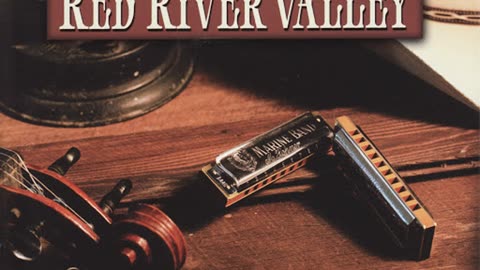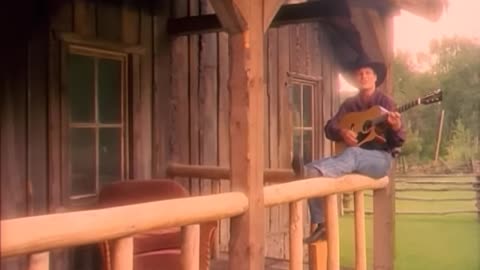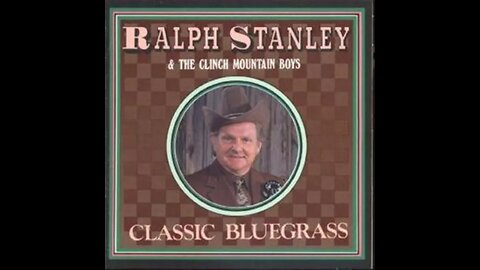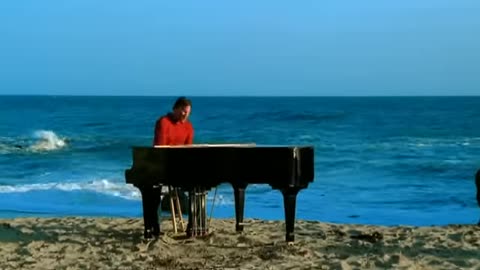Premium Only Content
This video is only available to Rumble Premium subscribers. Subscribe to
enjoy exclusive content and ad-free viewing.
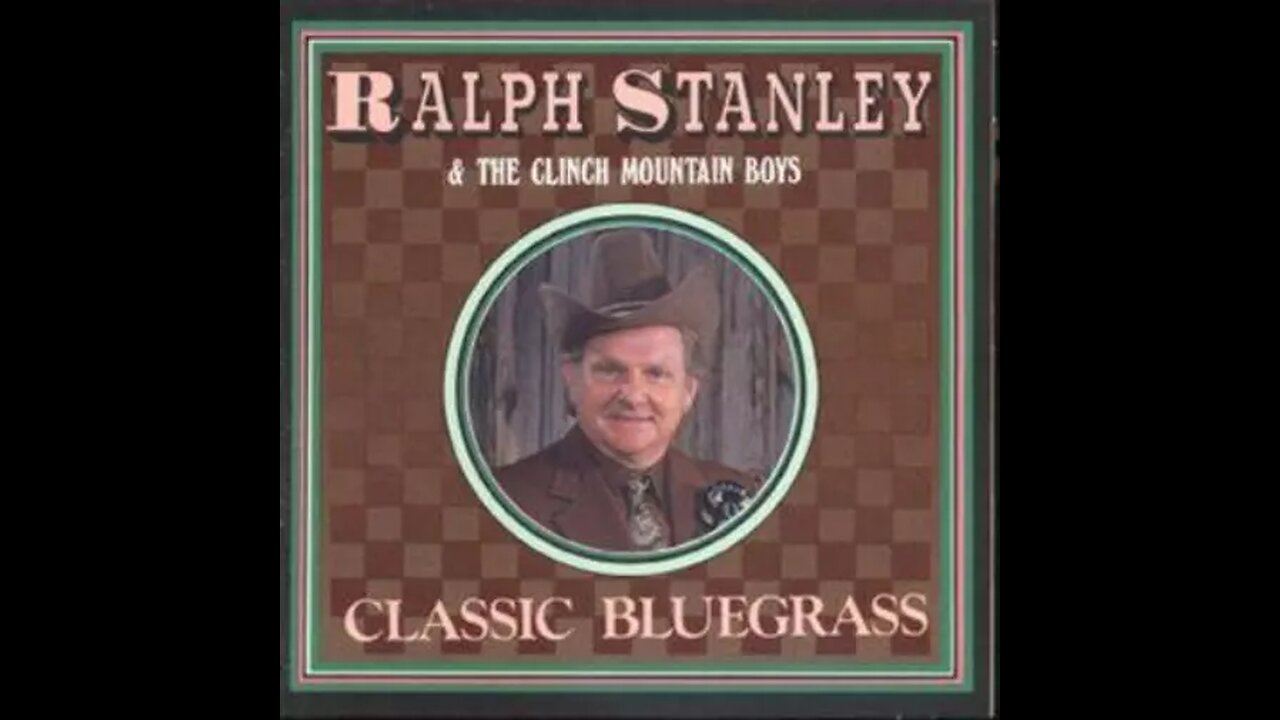
Music
TheAmericanObserver
- 16 / 17
1
Oliver Anthony - Rich Men North Of Richmond
The American Observer
https://www.youtube.com/watch?v=sqSA-SY5Hro
Contact Oliver at [email protected]
2
Bountiful, BC by Chelsea & The Sister Wives
T
The Mormon Observer
Original Source: https://www.youtube.com/watch?v=Bd6wlXhtKkQ
661 views Jan 15, 2014
BOUNTIFUL, BC
From Chelsea's CD 'Don't Tell My Dad'
By Chelsea Manders & Hayley Gratto
Chelsea & The Sister Wives: Vocals
Adrian Dolan: Producer, Guitar, Lap Steel, Drums
Transcript
Follow along using the transcript.
0:00
[Music]
0:04
there is a place in Canada in the
0:07
Creston Valley it's called Bountiful
0:11
British Columbia where the Rocky
0:14
Mountains reach up to the sunset where
0:18
the women are demure unobtrusive and
0:22
obedient Bountiful be see a place of
0:26
peace and Harmony Bountiful the capital
0:30
Canadian
0:33
polygamy one man with many wives
0:37
polygamy come on let's overpopulate
0:42
polygamy don't cheat just take her for
0:44
your wife
0:47
polygamy a
0:50
family sometimes a girl get lonely being
0:53
the one and only sometimes a guy get
0:56
antsy with the same old and the
0:59
same old pants so add a little spice
1:02
variation is always nice once is Never
1:05
As Good As twice or or more who keeping
1:08
score put a dash of something new into
1:12
that naughty love stew who cares if it's
1:17
a
1:19
polygamy one man with many wives
1:23
polygamy come on let's overpopulate
1:27
polygamy
1:30
you and me and her and she and that lady
1:35
from the internet
1:39
[Music]
1:41
kumay oh Lord
1:45
Kum he's got so much need and two sacks
1:49
full of seed all we need is a
1:52
traditional ho who is Hardy and willing
1:54
to help us s the seeds of his love in
1:57
the garden of plenty and contribute to
2:01
our community by helping raise an
2:04
enormous family you got to
2:08
love in Bountiful be where H has nothing
2:13
to do at all with
2:15
compatibility I got married to my
2:16
mother's father so now I'm My Own
2:20
Grandma I can never remember all the
2:23
names of the children in my family but
2:26
what's in a name when all that really
2:28
counts is the size of your pre-teen
2:29
daughter's birthing hips so you can
2:31
trade her to a family in Utah in order
2:33
to help stir up the G pool a bit come
2:36
and see our picturesque prosperous
2:40
marvelous leous incestuous come join us
2:45
inti BC
3
Hank Williams - Angel Of Death
The American Observer
Song called Angel of Death - Hiram King "Hank" Williams (September 17, 1923 – January 1, 1953) was an American singer-songwriter. He is regarded as one of the most significant and influential American singers and songwriters of the 20th century. Williams recorded 55 singles that reached the top 10 of the Billboard Country & Western Best Sellers chart, five of which were released posthumously, and 12 of which reached No.1.
Born and raised in Alabama, Williams learned guitar from African-American blues musician Rufus Payne. Both Payne and Roy Acuff significantly influenced his musical style. After winning an amateur talent contest, Williams began his professional career in Montgomery in the late 1930s playing on local radio stations and at area venues such as school houses, movie theaters, and bars. He formed the Drifting Cowboys backup band, which was managed by his mother, and dropped out of school to devote his time to his career. Because his alcoholism made him unreliable, he was fired and rehired several times by radio station WSFA, and had trouble replacing several of his band members who were drafted during World War II.
In 1944, Williams married Audrey Sheppard, who competed with his mother to control his career. After recording "Never Again" and "Honky Tonkin'" with Sterling Records, he signed a contract with MGM Records. He released the hit single "Move It On Over" in 1947 and joined the Louisiana Hayride radio program. The next year he released a cover of "Lovesick Blues", which quickly reached number one on Billboard's Top Country & Western singles chart and propelled him to stardom on the Grand Ole Opry. Although unable to read or notate music to any significant degree, he wrote such iconic hits as "Your Cheatin' Heart", "Hey, Good Lookin'", and "I'm So Lonesome I Could Cry". In 1952, Sheppard divorced him and he married Billie Jean Horton. He was dismissed by the Grand Ole Opry because of his unreliability and alcoholism.
Years of back pain, alcoholism, and prescription drug abuse severely compromised Williams' health, and at the age of 29, Williams suffered from heart failure and died unexpectedly in the back seat of a car near Oak Hill, West Virginia, en route to a concert in Canton, Ohio, on New Year's Day 1953. Despite his relatively brief career, he is one of the most celebrated and influential musicians of the 20th century, especially in country music. Many artists have covered his songs and he has influenced Chuck Berry, Elvis Presley, Johnny Cash, Bob Dylan, and the Rolling Stones, among others. He was inducted into the Country Music Hall of Fame in 1961, the Songwriters Hall of Fame in 1970, the Rock and Roll Hall of Fame in 1987, the Native American Music Awards Hall of Fame in 1999, and gained a star on the Hollywood Walk of Fame. In 2010, he was posthumously awarded a Pulitzer Prize Special Citation for his "craftsmanship as a songwriter who expressed universal feelings with poignant simplicity and played a pivotal role in transforming country music into a major musical and cultural force in American life."
Early life
Williams' family house in Georgiana, Alabama
Hank Williams was born Hiram Williams on September 17, 1923, in the rural community of Mount Olive in Butler County, Alabama.[1] He was the third child of Jessie Lillybelle "Lillie" (née Skipper; 1898–1955) and Elonzo Huble "Lon" Williams (1891–1970).[2] Williams was of English ancestry and Welsh ancestry.[3][4][5][6][7] Elonzo's family came from south and central Alabama,[8] and his father fought during the American Civil War, first on the Confederate side, and then with the Union after he was captured.[9] Elonzo was a railroad engineer for the W. T. Smith lumber company and was drafted during World War I, serving from July 1918 to June 1919. He suffered severe injuries after falling from a truck, breaking his collarbone, and receiving a severe blow to the head.[2]
The Williams' first child, Ernest Huble Williams, died two days after his birth on July 5, 1921. A daughter, Irene, was born a year later. Williams was named after Hiram I of the Book of Kings.[10] His name was misspelled as "Hiriam" on his birth certificate, which was prepared and signed when he was 10 years old.[11] Williams was born with spina bifida occulta, a birth defect of the spinal column that caused him lifelong pain and became a major factor in his later alcohol and drug abuse.[12] At the age of three, Williams sat with his mother as she played the organ at the Mount Olive Baptist Church. Lillie also joined singing the hymns that influenced the singer's later compositions. Williams received his first musical instrument, a harmonica, at the age of six.[13] As a child, he was nicknamed "Harm" by his family and "Herky" or "Skeets" by his friends.[14]
Williams' father frequently relocated for work, and as a result the family lived in several southern Alabama towns. In 1930, when Williams was seven years old, Elonzo began experiencing facial paralysis. After being evaluated at a Veterans Affairs clinic in Pensacola, Florida, doctors determined that he had a brain aneurysm, and Elonzo was sent to the VA Medical Center in Alexandria, Louisiana.[15] He remained hospitalized for eight years and was mostly absent throughout Williams' childhood. From that point on, Lillie assumed responsibility for the family.[16]
In the fall of 1933, Williams was sent to live with his aunt and uncle, Walter and Alice McNeil, in Fountain, Alabama. Their daughter, Opal, went in exchange to live with Lillie to attend school in Georgiana, Alabama. Williams learned to play basic guitar chords from his aunt and listened to music that was played at dances and in area churches.[17] The following year, the Williams family moved to Greenville, Alabama, where Lillie opened a boarding house next to the local cotton gin.[18] The family later returned with Opal McNeil to Georgiana, where Lillie took several side jobs to support the family despite the bleak economic climate of the Great Depression. She worked in a cannery and served as a night-shift nurse in the local hospital. Their first house burned down, and the family lost their possessions. They moved to Rose Street on the other side of town, into a house which Williams' mother soon turned into another boarding house. The house had a small garden in which they grew diverse crops that Williams and his sister Irene sold around Georgiana.[19] At a chance meeting in Georgiana, Williams' sister Irene met U.S. Representative J. Lister Hill while Hill was campaigning across Alabama. She told Hill that her mother was interested in talking to him about her problems. With Hill's help, the family began collecting Elonzo's disability pension.[20] Despite his medical condition, the family managed fairly well financially throughout the Great Depression.[21]
My Bucket's Got a Hole in It
Duration: 14 seconds.0:14
The popular song "My Bucket's Got a Hole in It" became a hit for Hank Williams in 1949.
Problems playing this file? See media help.
There are several versions of how Williams got his first guitar. While several prominent Georgiana residents later claimed to have bought it for him, his mother said she bought it for him and that she arranged for his first lessons.[22] Williams told Ralph Gleason, who at the time was writing a weekly music column in the San Francisco Chronicle, "When I was about eight years old, I got my first git-tar. A second-hand $3.50 git-tar my mother bought me."[23] Gawky and shy, Williams attached himself to an old black man, Rufus "Tee-Tot" Payne, a street performer whom Williams followed around town. Payne gave Williams guitar lessons in exchange for money or meals prepared by Lillie.[24] Payne's basic musical style was blues; he repeatedly stressed the importance of maintaining good rhythm and time,[25] and he added the showmanship of stoops, bows, laughs and cries to his performances.[26] Later on, Williams recorded "My Bucket's Got a Hole in It", one of the songs Payne had taught him.[27] Williams was also influenced by country acts such as Roy Acuff.[28] In 1937, Williams got into a fight with his physical education teacher about exercises the coach wanted him to do. His mother subsequently demanded that the school board terminate the coach; when they refused, the family moved to Montgomery, Alabama.[29] Payne and Williams lost touch, though Payne also eventually moved to Montgomery, where he died in poverty in 1939.[30] Williams later credited him as the provider of the only musical training he ever had.[31]
Career
1930s
Williams performing in Montgomery in 1938
In July 1937, the Williams and McNeils opened a boarding house on South Perry Street in downtown Montgomery. It was at this time that Williams decided to change his name informally from Hiram to Hank.[32] During the same year, he participated in a talent show at the Empire Theater and won the first prize of US$15 (equivalent to $300 in 2023) singing his first original song "WPA Blues". Williams wrote the lyrics and used the tune of Riley Puckett's "Dissatisfied".[33]
He never learned to read music; instead he based his compositions in storytelling and personal experience.[31] After school and on weekends, Williams sang and played his Silvertone guitar on the sidewalk in front of the WSFA radio studio.[34] His recent win at the Empire Theater and the street performances caught the attention of WSFA producers who occasionally invited him to perform on air with Dad Crysel's band.[35]
In August 1938, Elonzo Williams was temporarily released from the hospital. He showed up unannounced at the family's home in Montgomery. Lillie was unwilling to let him reclaim his position as the head of the household. Elonzo stayed to celebrate his son's birthday in September before he returned to the medical center in Louisiana.[36]
Williams' successful radio show fueled his entry into a music career, and he started his own band for show dates, the Drifting Cowboys. The original members were guitarist Braxton Schuffert, fiddler Freddie Beach, and comedian Smith "Hezzy" Adair.[37] Originally billed as "Hank and Hezzy and the Drifting Cowboys", they frequently appeared as fill-ins at the local dancehall, Thigpen's Log Cabin, just out of Georgiana.[38] The band traveled throughout central and southern Alabama performing in clubs and at private gatherings. James Ellis Garner later played fiddle for him. Lillie Williams became the Drifting Cowboys' manager. Williams dropped out of school in October 1939 so that he and the Drifting Cowboys could work full-time. Lillie Williams began booking show dates, negotiating prices and driving them to some of their shows.[39] Now free to travel without deference to Williams' schooling, the band could tour as far away as western Georgia and the Florida Panhandle.[40] The band started playing in theaters before the screening of films and later they played in honky-tonks. Williams' alcohol use started to become a problem during the tours; on occasion he spent a large part of the show revenues on alcohol. Meanwhile, between tour schedules, Williams returned to Montgomery to host his radio show.[41]
1940s
Williams, Sheppard, and the Drifting Cowboys band in 1951
The American entry into World War II in 1941 marked the beginning of hard times for Williams. While he was medically disqualified from military service after falling from a bull during a rodeo in Texas and suffering a back injury, his band members were all drafted to serve. Many of their replacements quit the band due to Williams' worsening alcoholism, and in August 1942 WSFA fired him for "habitual drunkenness". Backstage during one of his concerts, Williams met Roy Acuff, who warned him of the dangers of alcohol, saying, "You've got a million-dollar voice, son, but a ten-cent brain."[42]
He started a job as a shipfitter's helper for the Alabama Drydock and Shipbuilding Company at Mobile in 1942,[43] working there off and on for about a year and a half during the war. He also worked briefly at Kaiser Shipyards in Portland, Oregon, apparently lured by the free tickets, free accommodations, free training, and good wages offered by the company.[44] In 1943, Williams met Audrey Sheppard at a medicine show in Banks, Alabama. According to Sheppard, she and Williams lived in a hotel in Mobile while they worked together at the shipyard for a short while.[45] Sheppard told Williams that she wanted to help him regain his radio show, and that they should move to Montgomery and start a band. The couple were married in 1944 at a Texaco gas station in Andalusia, Alabama, by a justice of the peace. The marriage was technically invalid, since Sheppard's divorce from her previous husband did not comply with the legally required 60-day reconciliation period.[46]
In 1945, back in Montgomery, Williams returned to WSFA radio. He attempted to expand his repertoire by writing original songs,[47] and he published his first songbook, Original Songs of Hank Williams, containing "I'm Not Coming Home Anymore" and several more original songs,[48] nine in all, including one not written by him, "A Tramp on the Street".[49] With Williams beginning to be recognized as a songwriter, Sheppard became his manager and occasionally sang and substituted on guitar when a band member did not make the show.[50]
On September 14, 1946, Williams auditioned for Nashville's Grand Ole Opry at the recommendation of Ernest Tubb, but was rejected. After the failure of his audition, Williams and Audrey attempted to interest the recently formed music publishing firm Acuff-Rose Music. They approached Fred Rose, the president of the company, during one of his daily ping-pong games at WSM radio studios. Audrey asked Rose if her husband could sing a song for him at that moment, Rose agreed, and perceived that Williams had much promise as a songwriter.[51] Rose signed Williams to a six-song contract, and leveraged this deal to sign Williams with Sterling Records. On December 11, 1946, in his first recording session, Williams recorded "Wealth Won't Save Your Soul", "Calling You", "Never Again (Will I Knock on Your Door)", and "When God Comes and Gathers His Jewels", which was misprinted as "When God Comes and Fathers His Jewels".[52] The Sterling releases of Williams' songs became successful, and Rose decided to find a larger label for future releases. The producer then approached the newly formed recording division of the Loews Corporation, MGM Records.[53]
Lovesick Blues
Duration: 14 seconds.0:14
A major hit for Hank Williams, "Lovesick Blues" moved him to the mainstream of country music and assured him a position in the Grand Ole Opry.
Problems playing this file? See media help.
Williams signed with MGM Records in 1947 and released "Move It on Over", which became a country hit.[54] In 1948, he moved to Shreveport, Louisiana, and joined the Louisiana Hayride, a radio show broadcast on KWKH that brought him into living rooms all over the Southeastern United States, appearing in weekend shows. As part of the arrangement, Williams got a program on the station and bookings through the Hayride's artist service to perform across western Louisiana and eastern Texas, always returning on Saturdays for the show's weekly broadcast.[55] After a few more moderate hits, in 1949 he released his version of the 1922 Cliff Friend and Irving Mills song "Lovesick Blues", made popular by Rex Griffin.[56] Williams' version was a hit; the song stayed at number one on the Billboard charts for four consecutive months.[57] Following the success of the releases of "Lovesick Blues" and "Wedding Bells", Williams signed a management contract with Oscar Davis. Davis then booked the singer on a Grand Ole Opry package show, and he later negotiated Williams' induction into the musical troupe.[58]
On June 11, 1949, Williams made his debut at the Grand Ole Opry, where he received six encores.[59] He brought together Bob McNett (guitar), Hillous Butrum (bass), Jerry Rivers (fiddle) and Don Helms (steel guitar) to form the most famous version of the Drifting Cowboys.[60] That year Audrey Williams gave birth to Randall Hank Williams (Hank Williams Jr.).[61] During 1949, he joined the Grand Ole Opry's first European tour, performing in military bases in Germany and Austria.[62] Williams had five songs that ranked in the top five Billboard Hot Country Singles that year including: "Wedding Bells", "Mind Your Own Business", "You're Gonna Change (Or I'm Gonna Leave)", "My Bucket's Got a Hole in It", and "Lovesick Blues", which reached No. 1.[63]
1950s
By 1950, Williams earned an estimated $1,000 per show (equivalent to $12,700 in 2023).[64] That year, he began recording as "Luke the Drifter" for his moral-themed songs, many of which are recitations rather than singing. Fred Rose had been concerned how it would affect the jukebox operators who serviced the machines at the honky-tonks where William's songs were most commonly played if a customer punched a "Hank Williams" selection on a jukebox and heard a sermon rather than the music expected. It was he who requested that Hank use a pseudonym for these recitations to avoid leading people astray.[65] Although the real identity of Luke the Drifter was supposed to be unknown, Williams often performed part of the recorded material on stage. Most of the material was written by Williams himself, although Fred Rose wrote at least one piece, and others, according to his son Wesley, were collaborations between Williams, Rose, and himself.[66] The songs depicted Luke the Drifter traveling around from place to place, narrating stories of different characters[67] and philosophizing about relationships gone awry, injustice in society, and death.[68] Performances of the compositions included only Williams' voice, an organ, a bass fiddle, and Helms' steel guitar.[69]
Around this time Williams released more hit songs, such as "My Son Calls Another Man Daddy", "Why Should We Try Anymore", "Long Gone Lonesome Blues", "Why Don't You Love Me", and "I Just Don't Like This Kind of Livin'".[70] In 1951, "Dear John" became a hit, but it was the B-side, "Cold, Cold Heart", that became one of his most recognized songs.[71] A pop cover version by Tony Bennett released the same year stayed on the charts for 27 weeks, peaking at number one.[72]
Beyond the Sunset
Duration: 19 seconds.0:19
One characteristic of Williams' recordings as "Luke the Drifter" is the use of narration rather than singing.
Problems playing this file? See media help.
Williams' career reached a peak in the late summer of 1951 with his Hadacol tour of the U.S. with Bob Hope and other actors. On the weekend after the tour ended, Williams was photographed backstage at the Grand Ole Opry signing a motion picture deal with MGM.[73] In October, Williams recorded a demo, "There's a Tear in My Beer" for a friend, "Big Bill Lister", who had recorded "Beer Drinking Blues", a beer drinking song that sold well, and needed another one. The session was recorded by the head of A&R for Capitol Records, Ken Nelson. Afterwards Lister stored the demo acetate, with no markings, in a box of records kept at his house, and then when he moved, in his yard under a tarp for several years. He eventually gave the acetate to Hank Williams, Jr., who had a hit with it and an accompanying video which depicted the son playing with his father in an overdubbed dream sequence.[74] The following month, MGM Records released Williams' debut album, Hank Williams Sings. On November 14, 1951, Williams drove with Bill Lister and the Drifting Cowboys to New York where he appeared on television for the first time with Perry Como on CBS's Perry Como Show.[75] There he sang "Hey Good Lookin'", and the next week Como opened the show wearing a cowboy hat and singing the same song, with apologies to Williams.[76]
On May 21, 1951, Williams was admitted to North Louisiana Sanitarium in Shreveport for treatment of his alcoholism and his back problem, and was released on May 24.[77] In November of the same year, he fell trying to leap across a gully on a squirrel hunting trip with his fiddler Jerry Rivers in Franklin, Tennessee. The fall aggravated his congenital spinal condition, [78] and on December 13, 1951, he underwent a spinal fusion at Vanderbilt University Hospital. He was discharged against medical advice on Christmas Eve wearing a back brace and consuming more painkillers, to the detriment of his already compromised health.[79]
Williams performing in 1951
In the spring of 1952, Williams flew to New York City twice with his band and a Grand Ole Opry troupe to appear on two episodes of the nationally broadcast The Kate Smith Evening Hour.[80] On March 26, he performed "Hey Good Lookin'" and joined the rest of the cast in singing "I Saw the Light."[81] On April 23, he performed "Cold, Cold Heart" and sang a truncated "I Can't Help It (If I'm Still in Love with You)" with Anita Carter, and later joined the cast in singing "Glory Bound Train."[82] During the same year, Williams had a brief extramarital affair with dancer Bobbie Jett, resulting in the birth of their daughter, Jett Williams.[83]
In June 1952, he recorded "Jambalaya (On the Bayou)", "Window Shopping", "Settin' the Woods on Fire", and "I'll Never Get Out of This World Alive". Audrey Williams divorced him that year; the next day he recorded "You Win Again" and "I Won't Be Home No More".[84] Around this time, he met Billie Jean Jones, a girlfriend of country singer Faron Young, at the Grand Ole Opry. As a girl, Jones had lived down the street from Williams when he was with the Louisiana Hayride, and now Williams began to visit her frequently in Shreveport, causing him to miss many Grand Ole Opry appearances.[85]
On August 11, 1952, Williams was dismissed from the Grand Ole Opry for habitual drunkenness and missing shows. He returned to Shreveport to perform on KWKH and WBAM shows and in the Louisiana Hayride, for which he toured again. His performances were acclaimed when he was sober, but despite the efforts of his work associates to get him to shows sober, his abuse of alcohol resulted in occasions when he did not appear or his performances were poor.[86] In October 1952 he married Billie Jean Jones.[87]
During his last recording session on September 23, 1952, Williams recorded "Kaw-Liga", along with "Your Cheatin' Heart", "Take These Chains from My Heart", and "I Could Never Be Ashamed of You". By the end of 1952, Williams started to have heart problems.[88] He met Horace "Toby" Marshall in Oklahoma City, who said that he was a doctor. Marshall had been previously convicted for forgery, and had been paroled and released from the Oklahoma State Penitentiary in 1951. Among other fake titles, he said that he was a Doctor of Science. He purchased the DSC title for $25 from the Chicago School of Applied Science; in the diploma, he requested that the DSc be spelled out as "Doctor of Science and Psychology". Under the name of Dr. C. W. Lemon he prescribed Williams with amphetamines, Seconal, chloral hydrate, and morphine, which made his heart problems worse.[89] The final concert of his 1952 tour was held in Austin, Texas, at the Skyline Club on December 19.[90] Williams' last known public performance took place in Montgomery, on December 21, where he sang at a benefit held by the local chapter of the American Federation of Musicians for a radio announcer who had polio.[91][92]
Personal life
Williams and his first wife Audrey Sheppard in a publicity photo for MGM Records, c. 1952
On December 15, 1944, Williams married Audrey Sheppard. It was her second marriage and his first.[93] Their son, Randall Hank Williams (now known as Hank Williams Jr.), was born on May 26, 1949.[94] The marriage was always turbulent and rapidly disintegrated,[95] and Williams developed serious problems with alcohol, morphine, and other painkillers prescribed for him to ease the severe back pain caused by his spina bifida occulta.[96] The couple divorced on May 29, 1952.[97]
In June 1952, Williams moved into a house on the corner of Natchez Trace and Westwood Avenue in Nashville, sharing it with singer Ray Price.[98][99] Price left soon after due to Williams' alcoholism.[100] Following an unsuccessful tour of California and several stints in a sanitorium, Williams moved to his mother's boardinghouse by September.[101] A relationship with a woman named Bobbie Jett during this period resulted in a daughter, Jett Williams, who was born five days after Williams died. His mother adopted Jett, who became a ward of the state after her grandmother's death. She was adopted and raised by an unrelated couple and did not learn that she was Williams' daughter until the early 1980s.[102]
On October 18, 1952, Williams and Billie Jean Jones were married by a justice of the peace in Minden, Louisiana. The next day, two public marriage ceremonies were held at the New Orleans Civic Auditorium, where 14,000 seats were sold for each.[103] After Williams' death, a judge ruled that the wedding was not legal because Jones' divorce had not become final until 11 days after she married Williams. His first wife and his mother were the driving forces behind having the marriage declared invalid, and they pursued the matter for years.[104]
A man named Lewis Fitzgerald (born 1943) claimed to be Williams' illegitimate son; he was the son of Marie McNeil, Williams' cousin. Fitzgerald was interviewed, and he suggested that Lillie Williams operated a brothel at her boarding house in Montgomery. A friend of the family denied his claims, but singer Billy Walker remembered that Williams mentioned to him the presence of men in the house who were led upstairs.[105]
Death
Main article: Death of Hank Williams
Williams was scheduled to perform at the Municipal Auditorium in Charleston, West Virginia, on December 31, 1952. Advance ticket sales totaled $3,000.[106] That day, Williams could not fly because of a snow storm in the Montgomery area; he hired a college student, Charles Carr, to drive him to the concerts.[107] On December 30, Williams and Carr stopped at the Redmont Hotel in Birmingham, Alabama. The following morning, they continued to Fort Payne, and then to Knoxville, Tennessee. Williams and his driver then took a flight to Charleston, but the plane returned to Knoxville due to bad weather.[108] Back in Knoxville, the two arrived at the Andrew Johnson Hotel, and Carr requested a doctor for Williams, who was affected by the combination of the chloral hydrate and alcohol he had consumed on the way to Knoxville.[109] Dr. P. H. Cardwell injected Williams with two shots of vitamin B12 that also contained a quarter-grain of morphine. Carr and Williams checked out of the hotel, but the porters had to carry Williams to the car. Carr later mentioned that Williams had severe hiccups, while the porters said that he had made a coughing sound twice.[110] Carr spoke with Toby Marshall on the phone, who informed him on behalf of the tour's promoter, A.V. Bamford, that the show in Charleston was cancelled and he ordered him instead to drive Williams to Canton, Ohio, for a New Year's Day concert there.[111]
Entrance marker of the Oakwood Annex Cemetery in Montgomery, Alabama
Around midnight on January 1, 1953, the two crossed the Tennessee state line and arrived in Bristol, Virginia. Carr stopped at a small all-night restaurant and asked for a relief driver from a local taxi company, as he felt exhausted after driving for 20 hours. Driver Don Surface left the restaurant with Carr and Williams. They drove on until they stopped for fuel and coffee at a gas station in Oak Hill, West Virginia, where they realized that Williams had been dead for so long that rigor mortis had already set in. The station's owner called the local police chief.[112] Dr. Ivan Malinin performed the autopsy at the Tyree Funeral House.[113] He found hemorrhages in the heart and neck and pronounced the cause of death as "acute rt. ventricular dilation".[114] He also wrote that Williams had been severely beaten and kicked in the groin recently (during a fight in a Montgomery bar a few days earlier), and local magistrate Virgil F. Lyons ordered an inquest into Williams' death concerning a welt that was visible on his head.[113] That evening in Canton, when Williams' death was announced to the gathered crowd, a few people started laughing because they thought it was a joke. Akron deejay Cliff Rodgers assured the crowd that it was no joke and that Hank Williams was indeed dead. When Hawkshaw Hawkins and other performers started singing Williams' song "I Saw the Light" as a tribute to him, the crowd began to sing along.[115]
On January 2, Williams' body was transported to Montgomery, Alabama, where it was placed in a silver casket that was displayed at his mother's boarding house for two days. His funeral took place on January 4 at the Montgomery Auditorium, with his casket placed on the flower-covered stage. Mourners came to Montgomery from all over the South, and beyond.[116] An estimated 15,000 to 25,000 people were outside the auditorium, and inside were 2,750, with the balcony set aside for about 200 black mourners. Hundreds passed by the casket.[117] Backed by the Drifting Cowboys, Roy Acuff, Ernest Tubb and Red Foley performed "I Saw the Light", "Beyond the Sunset" and "Peace in the Valley".[118] Williams' remains are interred at the Oakwood Annex in Montgomery.[119]
In late January 1953, MGM Records told Billboard magazine that the label had to reduce their planned releases for the month from 12 records to 6 to satisfy the demand for Williams' music. The label estimated that the amount of back orders of his records, and those by other artists would cover the production of their Bloomfield, New Jersey, pressing plant until April 1953. Meanwhile, MGM Records received 3,000 direct requests for pictures of the singer, that combined with the requests from the distributors made the company outsource their printing and shipment. According to Acuff-Rose Music, the sales from the two Williams song folios jumped from their average of 700 per week to 5,000 in three weeks.[120]
Williams' final single, released in November 1952 while he was still alive, was titled "I'll Never Get Out of This World Alive". His song "Your Cheatin' Heart" was written and recorded in September 1952, but released in late January 1953 after his death. The song, backed by "Kaw-Liga", was No. 1 on the country charts for six weeks. "Take These Chains From My Heart" was released in April 1953 and reached No. 1 on the country charts.[121][122] Released in July, "I Won't Be Home No More" went to No. 4. Meanwhile, "Weary Blues From Waitin'" reached No. 7.[123]
Legacy
Hank Williams' star at 6400 Hollywood Boulevard, on the Hollywood Walk of Fame
The Country Music Hall of Fame stressed that Williams "set the agenda for contemporary country songcraft" and the "standard by which success is measured in country music".[124] Encyclopædia Britannica considers him "country music's first superstar" and an "immensely talented songwriter and an impassioned vocalist".[125] The Rock and Roll Hall of Fame praised the "straightforward approach" of Williams' songs, which they deemed "brutally honest" and written in the "language of the everyman".[126] To AllMusic, Williams "established the rules for all the country performers who followed him and, in the process, much of popular music".[127]
Entertainment Weekly's TV critic, Ken Tucker, wrote: "despite being a pop-culture titan and rightly dubbed "father of country music", Hank Williams was possibly the least likable — least warm and sympathetic — figure in modern music. Reeking of self-pity, he wrote and sang some of the greatest woe-is-me music of the century [...] Brimming with an anger that regularly spilled over into misogyny, Williams was also a master of spite".[128] Hank Williams, Jr. wrote in his autobiography: "To hear the tributes, one would think that the entire city [Nashville] took turns kissing Daddy while he was still alive. [...] While he was alive, he was despised and envied; after he died, he was some kind of saint."[129]
Alabama governor Gordon Persons officially proclaimed September 21 "Hank Williams Day".[130] The first celebration, in 1954, featured the unveiling of a monument at the Cramton Bowl that was later placed at the gravesite of Williams. The ceremony featured Ferlin Husky interpreting "I Saw the Light".[131][132] Williams had 11 number one country hits in his career ("Lovesick Blues", "Long Gone Lonesome Blues", "Why Don't You Love Me", "Moanin' the Blues", "Cold, Cold Heart", "Hey, Good Lookin'", "Jambalaya (On the Bayou)", "I'll Never Get Out of This World Alive", "Kaw-Liga", "Your Cheatin' Heart", and "Take These Chains from My Heart"), as well as many other top 10 hits.[133]
Many artists of the 1950s and 1960s, including Elvis Presley,[134] the Beatles,[135] Bob Dylan,[136] George Jones,[137] Tammy Wynette,[138] Jerry Lee Lewis,[139] Merle Haggard,[140] Gene Vincent,[141] and Ricky Nelson and Conway Twitty were influenced by Williams.[142]
When Downbeat magazine took a poll the year after Williams' death, he was voted the most popular country and Western performer of all time.[143] On February 8, 1960, Williams' star was placed at 6400 Hollywood Boulevard on the Hollywood Walk of Fame.[144] He was inducted into the Country Music Hall of Fame in 1961, and into the Alabama Music Hall of Fame in 1985.[124][145]
In 1964, the biographical film Your Cheatin' Heart starring George Hamilton as Williams was released.[146] The American Truckers Benevolent Association, a national organization of CB truck drivers, voted "Your Cheatin' Heart" as their favorite record of all time in the fourth annual Truck Drivers' Country Music Awards, in 1978.[147] In 1987, he was inducted into the Rock and Roll Hall of Fame under the category "Early Influence",[126] and he was given the Grammy Lifetime Achievement Award.[148] He was ranked second in CMT's 40 Greatest Men of Country Music in 2003, behind only Johnny Cash who recorded the song "The Night Hank Williams Came To Town". His son, Hank Jr., was ranked on the same list.[149] Canadian singer Sneezy Waters performed as Williams in the stage play Hank Williams: The Show He Never Gave.[150] A 1980 movie adaptation also starring Waters was produced for television.[151]
In 2004, Rolling Stone ranked him number 74 on its list of the 100 Greatest Artists of All Time.[152] In 2005, the BBC documentary series Arena featured an episode on Williams.[153]
In 2010, Williams' 1949 MGM number one hit, "Lovesick Blues", was inducted into the Recording Academy Grammy Hall of Fame.[154] The same year, Hank Williams: The Complete Mother's Best Recordings ...Plus! was honored with a Grammy nomination for Best Historical Album.[155] In 1999, Williams was inducted into the Native American Music Hall of Fame.[156] On April 12, 2010, the Pulitzer Prize Board awarded Williams a posthumous special citation that paid tribute to his "craftsmanship as a songwriter who expressed universal feelings with poignant simplicity and played a pivotal role in transforming country music into a major musical and cultural force in American life".[157]
Hank Williams, Jr.
=
Williams' grandson, Hank Williams III
Several of Williams' descendants became musicians: son Hank Williams Jr., daughter Jett Williams, grandsons Hank Williams III and Sam Williams, and granddaughters Hilary Williams and Holly Williams are also country musicians.[158][159][160] In July 2020, his granddaughter Katherine (Hank Jr.'s daughter) died in a car crash at the age of 27.[161] His great-grandson Coleman Finchum, son of Hank Williams III, released his debut single credited to IV and the Strange Band in 2021.[162] Meanwhile, Lewis Fitzgerald's son Ricky billed himself as Hank Williams IV following his father's claim of being Williams' son.[163]
According to reportage in the Los Angeles Times, on his road trips Williams carried a brown leather briefcase containing notebooks in which he wrote musings, lines and verses of song lyrics, as well as jottings on whatever had been handy. After he died, the cache of sixty-six unpublished songs in four notebooks was stored in a fireproof vault at the Nashville offices of his publishing firm, Acuff-Rose Publications. The vault was moved in 2002 to the offices of Sony ATV Music when it acquired Acuff-Rose.[164]
After the 2001 tribute album, "Hank Williams: Timeless" won a Grammy Award for country album of the year, there was heightened interest in similar projects. A&R executive Mary Martin, one of the producers of "Timeless", was consulted about other means of drawing attention to material from the Williams archive. She said that Bob Dylan was given the first opportunity to perform 12 songs for a CD compilation. Dylan approached Williams' granddaughter Holly Williams at a show where he gave her a sheaf of song lyrics he wanted her to read. She later said that although Dylan had said nothing about them at first, she recognized them immediately as her grandfather's work. He then said he had been asked to possibly cut an entire album, or that he might have other artists perform them. She heard nothing more about it for two years until Mary Martin revived the project and she got a phone call from her publishing company saying it was time for her to pick up some samples of the available material.[165]
Consequently, several other musicians got involved in the project, their main task being to create music that suited the lyrics. Dylan chose a song called "The Love That Faded" and fashioned a "honky-tonk waltz through heartache", while Holly Williams combed through the songs and songs fragments and chose one called "Blue Is My Heart", which had only eight lines. She wrote two more and added a bridge. The completed album, named The Lost Notebooks of Hank Williams, included the contributions of Bob Dylan and Holly Williams, as well as recordings by Alan Jackson, Jack White, Jakob Dylan,[164] Lucinda Williams, Norah Jones, Vince Gill, Rodney Crowell, Patty Loveless, Levon Helm, Sheryl Crow, and Merle Haggard. The album was released on October 4, 2011.
Material recorded by Williams, originally intended for radio broadcasts to be played when he was on tour or for its distribution to radio stations nationwide, resurfaced over the years.[166] In 1993, a double-disc set of recordings of Williams for the Health & Happiness Show was released.[167] Broadcast in 1949, the shows were recorded for the promotion of Hadacol. The set was re-released on Hank Williams: The Legend Begins in 2011. The album included the unreleased songs "Fan It" and "Alexander's Ragtime Band", recorded by Williams at age 15; the homemade recordings of him singing "Freight Train Blues", "New San Antonio Rose", "St. Louis Blues" and "Greenback Dollar" at age 18; and a recording for the 1951 March of Dimes.[168]
In May 2014, further radio recordings by Williams were released. These were recordings of The Garden Spot Programs, 1950, a series of publicity segments for plant nursery Naughton Farms originally aired in 1950. The recordings were found by collector George Gimarc at radio station KSIB in Creston, Iowa.[169] Gimarc contacted Williams' daughter Jett, and Colin Escott, a music historian and biographer of Williams. The material was restored and remastered by Michael Graves and released by Omnivore Recordings.[170][171] The release won a Grammy Award for Best Historical Album.[172]
Williams was portrayed by English actor Tom Hiddleston in the 2016 biopic I Saw the Light, based on Colin Escott's 1994 book Hank Williams: The Biography.[173] In 2023, Rolling Stone ranked Williams at No. 30 on their list of the 200 Greatest Singers of All Time.[174] For the 100th anniversary of his birth, the Hank Williams Museum organized a three-day event in Montgomery that consisted of a series of concerts at the Davis Theater at Troy University and a wreath-laying ceremony at Williams' graveside as the closing event.[175] At the ceremony, September 17, 2023 was proclaimed Hank Williams Day.[176] Meanwhile, in Nashville, the Country Music Hall of Fame and Museum organized a concert featuring artists including Rodney Crowell and Williams' grandchildren Holly, Hillary, and Sam among others.[177] On the anniversary, Billboard commented that Williams was a "breakthrough songwriter" who "remains a mythological figure".[178]
Lawsuits over the estate
Williams died without leaving a will. In May 1953, Audrey Williams filed a lawsuit in Nashville against MGM Records and Acuff-Rose. The suit demanded that both of the publishing companies continue to pay her half of the royalties from Hank Williams' records. Williams had an agreement giving his first wife half of the royalties, but allegedly there was no clarification that the deal was valid after his death. Because Williams left no will, the disposition of the remaining 50 percent was considered uncertain; those involved included Williams' second wife, Billie Jean Horton and Williams' mother and sister.[179]
At the time of his death, Williams' estate was estimated to be US$13,329.25 (equivalent to $151,800 in 2023) between cash, a cashier's check and his possessions.[180] Lilly Williams considered the legality of Billie Jean's marriage to her son doubtful and she filed for the control of the estate.[181] Billie Jean's lawyer argued that although she married Williams ten days before the finalization of her divorce to Harrison Eshlimar, Louisiana law considered the union legal since she married "in good faith".[182]
Doubtful of the legality of the marriage in Tennessee and Alabama, Lilly Williams and her lawyers made several offers to settle out of court with Billie Jean that reached a final of US$30,000.[183] On August 19, 1953, Billie Jean signed an agreement accepting the money. It required that she stopped making appearances billing herself as "Mrs. Hank Williams", to reveal the location of Williams' Tennessee Walking Horse, and the return of a saddle and three suitcases that belonged to him. With the agreement, Lilly became the legal guardian of the estate on behalf of Hank Williams, Jr.[184]
Soon after giving birth, Bobbie Jett left her and Williams' daughter at Lilly's boardinghouse. Williams' mother expressed to the Montgomery County Department of Public Welfare in January 1953 her intention to adopt the child. While Irene Williams opposed the adoption, Williams' mother was granted the custody over the child she renamed "Cathy".[185] Upon Lilly's death in 1955, Irene Williams assumed control of the estate.[183] She became thus the legal guardian of Williams' son, while refused to adopt Cathy. Irene made an attempt to contact Bobbie Jett, who was at the time married and lived in California. Jett refused to take the child since her husband did not know of the existence of her daughter with Williams.[186] Cathy was then put up for adoption and granted money from the estate of Lilly Williams, to be paid at the age of 21.[187]
In 1963, Wesley Rose contacted Irene regarding the copyright renewals with Acuff-Rose: Rose offered US$25,000 (equivalent to $248,800 in 2023),[188] which Irene accepted to prevent Williams' daughter from making a claim in the future.[189] In 1966, an Alabama judge determined that the guardianship of Williams' estate belonged to Irene Williams, and he confirmed the validity of the copyright renewal deal. Cathy's adoptive parents were contacted by a lawyer, but they refused to contest the ruling of the court.[190] In 1967, Hank Williams, Jr. was declared the only heir to the estate by a second judge.[191] In 1969, the guardianship of the estate was transferred to lawyer Robert Stewart after Irene was arrested and sentenced to a jail term for possession of cocaine by a Texas court.[183] Hank Williams, Jr. reached legal adulthood in 1970.[189]
On October 22, 1975, a federal judge in Atlanta, Georgia, ruled that Billie Jean Horton was Williams' common-law wife, and that part of the copyright renewals of the songs belonged to her.[191] At the age of 21, Cathy learned that Hank Williams was her biological father. In 1981, she found her half-siblings in California, and she learned of a 1951 contract between her biological parents that recognized her as Williams' daughter. She also learned that the court decisions of the 1960s ignored her existence. After a decision by the Supreme Court of Alabama in 1989, she was recognized as an heir of the estate of Williams. She later changed her name to Jett Williams.[192]
WSM's Mother's Best Flour
In 1951, Williams hosted a 15-minute show for Mother's Best Flour on WSM radio. Due to Williams' tour schedules, some of the shows were previously recorded to be played in his absence.[193] During the mid-1960s, WSM staff photographer Les Leverett rescued acetates that were thrown away by the station.[194] At a later point, the recordings were duplicated.[195] In the 1980s, he shared the acetates with Williams' former band member Jerry Rivers. A decade later, Leverett made a deal with former Drifting Cowboy Hillous Brutum, who did not appear on the recordings, for a commercial release of the copies.[194]
The Legacy Entertainment Group, based in Brentwood, Tennessee, was sued by PolyGram and the heirs of Williams to block the release in 1997. While the original acetates of the shows made their way to the possession of Jett Williams, the lawyer of Legacy Entertainment Group claimed that they belonged to the label and he made an attempt to prevent the heirs of Williams to work on their own release of the recordings. Leverett then told The Tennessean that the original acetates did not belong to Butrum, and that the two of them made a deal to share the profits of the planned Legacy Entertainment Group release.[194] The Universal Music Group, the parent company of Polygram, then claimed ownership of the shows.[195]
In January 2006, the Tennessee Court of Appeals upheld a lower court ruling stating that Williams' heirs—son, Hank Williams Jr, and daughter, Jett Williams—have the sole rights to sell his recordings.[196] In 2008, Time-Life released Unreleased Recordings, a selection of numbers pertaining to the Mother's Best Flour shows. In 2010, the company released a 15-CD box-set containing all of the recordings remastered by sound engineer Joe Palmaccio entitled The Complete Mothers' Best Recordings... Plus!.[197]
Tributes
Main article: List of tributes to Hank Williams
Awards
Year Award Awards Notes References
1987 Grammy Lifetime Achievement Award 29th Annual Grammy Awards Posthumously [148]
1989 Grammy for Best Country Vocal Collaboration ("There's a Tear in My Beer") Grammy with Hank Williams Jr. [198]
1989 Music Video of the Year ("There's a Tear in My Beer") CMA with Hank Williams Jr. [199]
1989 Vocal Event of the Year ("There's a Tear in My Beer") CMA with Hank Williams Jr.
1990 Video of the Year ("There's a Tear in My Beer") Academy of Country Music with Hank Williams Jr. [200]
1990 Vocal Collaboration of the Year ("There's a Tear in My Beer") TNN/Music City News with Hank Williams Jr. [201]
1990 Video of the Year ("There's a Tear in My Beer") TNN/Music City News with Hank Williams Jr.
2010 Special Awards and Citation for his pivotal role in transforming country music The Pulitzer Prize Posthumously [157]
Discography
Main article: Hank Williams discography
See also: List of songs written by Hank Williams
Footnotes
Williams, Roger M. 1981, p. 6.
Koon, George William 2001, pp. 4–6.
"Cowtown Birthplace of Western Swing - Hank Williams".
Breverton, Terry (2009). Wales: A Historical Companion. Amberley Publishing Limited. ISBN 978-1-4456-0990-4.
"Luke the Drifter and the Secrets of Country | ABCtales".
"Cowtown Birthplace of Western Swing - Hank Williams".
Ribowsky, Mark (2016). Hank: The Short Life and Long Country Road of Hank Williams. Liveright Publishing. p. 15. ISBN 978-1-63149-158-0.
Williams, Roger M. 1981, p. 5.
Ribowsky, Mark 2016, p. 15.
Escott, Colin, Merritt, George & MacEwen, William 2009, p. 3.
Koon, George William 2001, pp. 6–7.
Koon, George William 2001, p. 10.
Williams, Roger M. 1981, p. 11.
Williams, Roger M. 1981, p. 7.
Escott, Colin, Merritt, George & MacEwen, William 2009, p. 9.
Williams, Roger M. 1981, pp. 8–10.
Hemphill, Paul 2005, pp. 18–21.
Escott, Colin, Merritt, George & MacEwen, William 2009, pp. 13–14.
Williams, Roger M. 1981, pp. 10–14.
Williams, Roger M. 1981, p. 27.
Hemphill, Paul 2005, pp. 16–17.
Williams, Roger M. 1981, p. 20.
Betts, Stephen L. 2019.
Williams, Roger M. 1981, pp. 20–26.
Escott, Colin, Merritt, George & MacEwen, William 2009, p. 12.
Hemphill, Paul 2005, p. 23.
Brackett, David 2000, p. 98.
Escott, Colin, Merritt, George & MacEwen, William 2009, pp. 21–23.
Masino, Susan 2011, p. 11.
Escott, Colin, Merritt, George & MacEwen, William 2009, p. 229.
Rankin, Allen 1951, p. 3C.
Escott, Colin, Merritt, George & MacEwen, William 2009, pp. 19–21.
Koon, George William 2001, p. 16.
Koon, George William 2001, p. 28.
Koon, George William 2001, pp. 16–17.
Hemphill, Paul 2005, p. 30.
Escott, Colin, Merritt, George & MacEwen, William 2009, pp. 20–21.
Williams, Roger M. 1981, p. 37.
Koon, George William 2001, pp. 16–18.
Escott, Colin, Merritt, George & MacEwen, William 2009, p. 24.
Hemphill, Paul 2005, pp. 34–37.
Hemphill, Paul 2005, pp. 39–40.
Lipsitz 1994, p. 26.
Escott, Colin, Merritt, George & MacEwen, William 2009, p. 33.
Escott, Colin, Merritt, George & MacEwen, William 2009, pp. 34–35, 38–39.
Koon, George William 2001, pp. 23–24.
Williams, Roger M. 1981, p. 42.
Escott, Colin, Merritt, George & MacEwen, William 2009, pp. 41–42.
Williams, Hank 1945.
Williams, Roger M. 1981, pp. 56–57.
Williams, Roger M. 1981, pp. 58–60.
Escott, Colin, Merritt, George & MacEwen, William 2009, pp. 59–60.
Escott, Colin, Merritt, George & MacEwen, William 2009, pp. 64–65.
Williams, Roger M. 1981, pp. 66–67.
Williams, Roger M. 1981, pp. 69–71.
Escott, Colin, Merritt, George & MacEwen, William 2009, pp. 98–99.
Escott, Colin, Merritt, George & MacEwen, William 2009, pp. 100.
Escott, Colin, Merritt, George & MacEwen, William 2009, pp. 109, 113, 116.
Koon, George William 2001, pp. 41–42.
Koon, George William 2001, pp. 46–50.
Koon, George William 2001, p. 43.
Escott, Colin, Merritt, George & MacEwen, William 2009, p. 131.
Young, William H. & Young, Nancy K. 2010, p. 235.
Koon, George William 2001, p. 50.
Hemphill, Paul 2005, pp. 117–118.
Williams, Roger M. 1981, p. 129.
Hurd, Mary G. 2015, p. 12.
Wilmeth 2014, p. 250.
Hemphill, Paul 2005, pp. 118.
Billboard staff 1951, p. 19.
Escott, Colin, Merritt, George & MacEwen, William 2009, pp. 155–159.
Whitburn, Joel 1991, p. 26.
Escott, Colin, Merritt, George & MacEwen, William 2009, p. 190.
Escott, Colin, Merritt, George & MacEwen, William 2009, p. 180-181.
Ribowsky, Mark 2016, p. 191.
Escott, Colin, Merritt, George & MacEwen, William 2009, pp. 191–193.
Koon, George William 2001, pp. 153, 154.
Koon, George William 2001, p. 63.
Koon, George William 2001, pp. 63, 153–154.
Escott, Colin, Merritt, George & MacEwen, William 2009, p. 209, 211.
CMHoF 2023a.
CMHoF 2023b.
Escott, Colin, Merritt, George & MacEwen, William 2009, pp. 209, 226–227.
Escott, Colin, Merritt, George & MacEwen, William 2009, pp. 213–216.
Williams, Roger M. 1981, p. 201-204.
Williams, Roger M. 1981, pp. 197–199.
Koon, George William 2001, p. 70.
Koon, George William 2001, p. 67.
Koon, George William 2001, p. 74.
Escott, Colin, Merritt, George & MacEwen, William 2009, pp. 255–256.
Koon, George William 2001, p. 75, 154.
Williams, Roger M. 1981, p. 212.
Koon, George William 2001, pp. 22–24.
Koon, George William 2001, p. 40.
Koon, George William 2001, pp. 26, 36–38.
Koon, George William 2001, pp. 9–10.
Williams, Roger M. 1981, p. 96.
Escott, Colin, Merritt, George & MacEwen, William 2009, p. 202.
Williams, Roger M. 1981, p. 193.
Williams, Roger M. 1981, p. 195.
Koon, George William 2001, pp. 65–67.
Williams, Hilary & Roberts, Mary Beth 2010, p. 127.
Koon, George William 2001, pp. 68–70.
Williams, Roger M. 1981, pp. 233–236.
Ribowsky, Mark 2016, p. 43.
Lilly, John 2002, pp. 64–65.
Williams, Roger M. 1981, p. 213.
Escott, Colin, Merritt, George & MacEwen, William 2009, pp. 265–266.
Olson, Ted 2004, p. 295.
Olson, Ted 2004, pp. 296–298.
Escott, Colin, Merritt, George & MacEwen, William 2009, p. 267.
Escott, Colin, Merritt, George & MacEwen, William 2009, pp. 268–270.
Escott, Colin, Merritt, George & MacEwen, William 2009, p. 271.
Koon, George William 2001, p. 78.
Escott, Colin, Merritt, George & MacEwen, William 2009, pp. 275–276.
Williams, Roger M. 1981, pp. 223–224.
Escott, Colin, Merritt, George & MacEwen, William 2009, pp. 276–280.
Hemphill, Paul 2005, p. 190.
Peterson, Richard A. 1997, p. 182.
Billboard staff 1953a, p. 15.
Williams, Roger M. 1981, p. 199.
Escott, Colin, Merritt, George & MacEwen, William 2009, pp. 288–289.
Whitburn, Joel 2002, p. 391.
CMHoF 2023c.
Wallenfeldt, Jeff 2023.
RockHall 2023.
Erlewine, Stephen Thomas 2013.
Tucker, Ken 1998.
Williams & Bane 1979, p. 64.
Outlook staff 1954, p. 1.
Andersen, Fred 1954, pp. 1-2.
Ribowsky, Mark 2016, p. 292.
George-Warren, Holly et al. 2001, p. 1066.
Guralnick, Peter 1999, p. 224.
Schneider, M. 2008, p. 30.
Dylan, Bob 2004, p. 96.
Isenhour, Jack 2011, p. 134.
McDonough, Jimmy 2010, pp. 35–36.
Bragg, Rick 2014, pp. 92–93.
Haggard, Merle & Carter, Tom 1999, p. 74.
Hagarty, Britt 1983, p. 22.
Selvin, Joel 1990, p. 165.
Williams, Roger M. 1981, p. 140.
Walk of Fame staff 2013.
AlamHof 2003.
Hemphill, Paul 2005, pp. 192–193.
Vanderslice, Paula 1978, p. 7A.
Oermann, Robert K. 1987, p. 5E.
CMT staff 2004.
McPherson, David 2017, pp. 94–95.
Mulholland, Dave 1981, p. 4C.
Rolling Stone staff 2014.
BBC staff 2005.
Cooper, Peter 2010, p. 3A.
Hughes, Mike 2011, p. 5C.
Herald-Journal staff 1999, p. A2.
Keiper, Nicole 2010, p. 3A.
Chiu, David 2010.
AP staff 2008.
Betts, Stephen L. 2018.
Pasquini, Maria 2020.
Harmon, Bryce 2021.
Savingcountrymusic.com 2021.
Lewis, Randy 2011.
Talbott, Chris 2011.
Koon, George William 2001, pp. 153–154.
Hinckley, David 1993, p. 58.
Flippo, Chet 2011b.
Mansfield, Brian 2014.
Vigeland, Tess 2014.
Elliot, Gwendolyn 2014.
Stefano, Angela 2015.
Michaels, Sean 2014.
Rolling Stone staff 2023.
WSFA 2023.
Avant, Julia 2023.
Sauter, Danica 2023.
Roland, Tom 2023.
Billboard staff 1953b, p. 15.
Williams, Roger M. 1981, p. 233.
Williams, Roger M. 1981, p. 234.
Williams, Roger M. 1981, pp. 234–235.
Williams, Roger M. 1981, p. 235.
Escott, Colin, Merritt, George & MacEwen, William 2009, p. 288.
Escott, Colin, Merritt, George & MacEwen, William 2009, pp. 285–286.
Escott, Colin, Merritt, George & MacEwen, William 2009, p. 289.
Escott, Colin, Merritt, George & MacEwen, William 2009, p. 290.
Koon, George William 2001, p. 85.
Escott, Colin, Merritt, George & MacEwen, William 2009, p. 293.
Escott, Colin, Merritt, George & MacEwen, William 2009, p. 294.
Koon, George William 2001, p. 87.
Koon, George William 2001, pp. 89–90.
Hilbourn, Robert 2008.
Underwood, Ryan 2006, p. 2A.
Ragogna, Mike 2010.
AP staff 2006.
Hyperbolium 2010.
Kot, Greg 1990, p. 28 (section 1).
Oermann, Robert K. & Goldsmith, Thomas 1989, p. 6D.
Wilson, Jeff 1990, p. 6D.
Goldsmith, Thomas & Oermann, Robert K. 1990, p. 3D.
References
AlamHof (2003). "1985 Inductee: Lifework Award for Performing Achievement". The Alabama Music Hall of Fame. Archived from the original on February 13, 2003. Retrieved October 4, 2011.
Andersen, Fred (September 22, 1954). "Crowds Pack Cramton Bowl To Close Hank Williams Days". The Montgomery Advertiser. Vol. 126, no. 227. Retrieved May 17, 2023 – via Newspapers.com. Open access icon
AP staff (January 24, 2006). "Hank Williams' heirs own rights to recordings". Associated Press. Retrieved June 27, 2023.
AP staff (April 17, 2008). "New exhibit explores Hank Williams' family legacy". Yahoo!. Associated Press. Archived from the original on March 18, 2013. Retrieved March 14, 2011.
Avant, Julia (September 18, 2023). "'Hank Williams Day' declared on his 100th birthday". Gray Media Group, Inc. Retrieved September 25, 2023.
BBC staff (February 5, 2005). "Hank Williams - Honky Tonk Blues". BBC. Retrieved February 10, 2021.
Betts, Stephen L. (September 18, 2018). "Hilary Williams on Triumphant New Album 'My Lucky Scars,' Family Legacy". Rolling Stone. Retrieved February 8, 2020.
Betts, Stephen L. (September 17, 2019). "Flashback: Hear Hank Williams' Recorded Debut With 'Fan It' and 'Alexander's Ragtime Band'". Rolling Stone. Archived from the original on September 20, 2019. Retrieved June 18, 2023.
Billboard staff (January 13, 1951). "The Year's Top Country & Western Artists/The Year's Top Country & Western Records". The Billboard. Vol. 63, no. 2. ISSN 0006-2510. Retrieved April 10, 2023 – via Google Books. Open access icon
Billboard staff (January 31, 1953a). "In-Pouring of Tributes to Williams Continues". Billboard. Vol. 65, no. 5. Retrieved April 17, 2023 – via Google Books. Open access icon
Billboard staff (May 23, 1953b). "File Action to Untangle Hank Williams Estate". Billboard. Vol. 65, no. 21. ISSN 0006-2510. Retrieved March 13, 2011 – via Google Books. Open access icon
Brackett, David (2000). Interpreting popular music. University of California Press. ISBN 978-0-520-22541-1.
Bragg, Rick (2014). Jerry Lee Lewis: His Own Story. Canongate Books. ISBN 978-0-857-86160-3. Retrieved July 12, 2023 – via Archive.org.
Chiu, David (November 2, 2010). "Hilary Williams Details Her Brush with Death in 'Sign of Life'". theboot.com. Retrieved July 8, 2020.
CMHoF (2023a). "The Kate Smith Evening Hour w/ Hank Williams, Roy Acuff, The Carter Family, The Duke of Paducah, June Carter and Ethel and Albert. [video recording]". Country Music Hall of Fame and Museum Digital Collections. Retrieved June 12, 2023.
CMHoF (2023b). "The Kate Smith Evening Hour, 4/23/1952. [video recording]". Country Music Hall of Fame and Museum Digital Collections. Retrieved June 12, 2023.
CMHoF (2023c). "Hank Williams". The Country Music Hall of Fame and Museum. Retrieved March 15, 2023.
CMT staff (2004). "The Greatest: 40 Greatest Men of Country Music". Country Music Television. Archived from the original on April 14, 2009. Retrieved March 23, 2023.
Cooper, Peter (December 10, 2010). "Country titles enter Grammy Hall of Fame". The Tennessean. Retrieved March 23, 2023 – via Newspapers.com. Open access icon
Dylan, Bob (2004). Chronicles: Volume One. Simon & Schuster. ISBN 978-0-743-22815-2.
Elliot, Gwendolyn (May 24, 2014). "Newly Discovered Hank! 'The Garden Spot Programs' 1950". American Standard Time. Archived from the original on July 1, 2014.
Erlewine, Stephen Thomas (2013). "Hank Williams Biography". AllMusic. Retrieved May 12, 2023.
Escott, Colin; Merritt, George; MacEwen, William (2009). Hank Williams: The Biography. Hachette UK. ISBN 978-0-316-07463-6.
Flippo, Chet (September 15, 2011b). "Nashville Skyline: Johnny Cash and Hank Williams: Got Some More Music Here". Country Music Television. Archived from the original on May 28, 2014. Retrieved March 20, 2023.
George-Warren, Holly; Romanowski, Patricia; Romanowski Bashe, Patricia; Pareles, Jon (2001). The Rolling Stone Encyclopedia of Rock & Roll. Fireside. ISBN 978-0-7432-0120-9.
Goldsmith, Thomas; Oermann, Robert K. (June 6, 1990). "Rick Van Shelton Tops TNN Awards". New York: Press and Sun-Bulletin. Gannett News Service. Retrieved February 8, 2021 – via Newspapers.com. Open access icon
Guralnick, Peter (1999). Careless Love: The Unmaking of Elvis Presley. Little, Brown and Company. ISBN 978-0-316-33222-4.
Hagarty, Britt (1983). The Day the World Turned Blue. Talon Books. ISBN 0-88922-214-2. Retrieved July 12, 2023 – via Archive.org.
Haggard, Merle; Carter, Tom (1999). My House of Memories. Cliff Street Books. ISBN 0-06-019308-5. Retrieved July 12, 2023 – via Archive.org.
Harmon, Bryce (August 4, 2021). "IV & The Strange Band Set for Muddy Roots in September as Coleman Carries on Country Legacy". The Murfreesboro Pulse. Archived from the original on August 12, 2021.
Hemphill, Paul (2005). Lovesick Blues: The Life of Hank Williams. New York: Penguin Group. ISBN 0-670-03414-2.
Herald-Journal staff (November 9, 1999). "Hank Williams: Native American group Inducts Him". Herald-Journal. Vol. 154, no. 313. Retrieved June 25, 2010 – via Google News Archive. Open access icon
Hilbourn, Robert (October 28, 2008). "There's Plenty Cookin'". Los Angeles Times. Retrieved March 14, 2011.
Hinckley, David (April 9, 1993). "Saving Brown's Soul". New York Daily News. Retrieved April 3, 2023 – via Newspapers.com. Open access icon
Hughes, Mike (February 13, 2011). "Grammys cover their tracks". Lansing State Journal. Retrieved March 23, 2023 – via Newspapers.com. Open access icon
Hurd, Mary G. (2015). Kris Kristofferson: Country Highwayman. Rowman & Littlefield. ISBN 978-0-8108-8821-0.
Hyperbolium (October 7, 2010). "Review: Hank Williams – The Complete Mothers' Best Recordings... Plus! (Time Life, 2010)". No Depression. Retrieved June 27, 2023.
Isenhour, Jack (2011). He Stopped Loving Her Today: George Jones, Billy Sherrill, and the Pretty-much Totally True Story of the Making of the Greatest Country Record of All Time. University Press of Mississippi. ISBN 978-1-617-03102-1.
Keiper, Nicole (May 30, 2010). "Jett Williams Accepts Hank's Pulitzer". The Tennessean. Retrieved April 3, 2023 – via Newspapers.com. Open access icon
Koon, George William (2001) [1983]. Hank Williams, So Lonesome. University of Mississippi press. ISBN 978-1-57806-283-6.
Kot, Greg (February 22, 1990). "Raitt's revival is confirmed by 4 Grammys". Chicago Tribune. Vol. 143, no. 53. Retrieved April 3, 2023 – via Newspapers.com. Open access icon
Lewis, Randy (October 2, 2011). "'Lost Notebooks of Hank Williams' finds good company in Bob Dylan". Los Angeles Times. Archived from the original on April 3, 2023. Retrieved April 3, 2023.
Lilly, John (2002). "Hank's Lost Charleston Show". Goldenseal. West Virginia Division of Culture and History. Archived from the original on June 28, 2011. Retrieved March 14, 2023.
Lipsitz, George (1994). Rainbow at Midnight: Labor and Culture in the 1940s. University of Illinois Press. ISBN 978-0-252-06394-7.
Mansfield, Brian (March 28, 2014). "Hear a newly discov
4
Ram Jam - Black Betty
The American Observer
Listen to Ram Jam: https://RamJam.lnk.to/bestofYD
Subscribe to Ram Jam on YouTube: https://RamJam.lnk.to/subscribeYD
Follow Ram Jam:
Facebook: https://RamJam.lnk.to/followFI
YouTube: https://RamJam.lnk.to/subscribeYD
Spotify: https://RamJam.lnk.to/followSI
Lyrics:
Whoa, Black Betty (Bam-ba-Lam)
Whoa, Black Betty (Bam-ba-Lam)
Black Betty had a child (Bam-ba-Lam)
The damn thing gone wild (Bam-ba-Lam)
She said, "I'm worryin' outta mind" (Bam-ba-Lam)
The damn thing gone blind (Bam-ba-Lam)
I said "Oh, Black Betty" (Bam-ba-Lam)
Whoa, Black Betty (Bam-ba-Lam)
Oh, Black Betty (Bam-ba-Lam)
Whoa, Black Betty (Bam-ba-Lam)
She really gets me high (Bam-ba-Lam)
You know that's no lie (Bam-ba-Lam)
She's so rock steady (Bam-ba-Lam)
And she's always ready (Bam-ba-Lam)
Whoa, Black Betty (Bam-ba-Lam)
Whoa, Black Betty (Bam-ba-Lam)
Whoa, Black Betty (Bam-ba-Lam)
Whoa, Black Betty (Bam-ba-Lam)
She's from Birmingham (Bam-ba-Lam)
Way down in Alabam' (Bam-ba-Lam)
Well, she's shakin' that thing (Bam-ba-Lam)
Boy, she makes me sing (Bam-ba-Lam)
Whoa, Black Betty (Bam-ba-Lam)
Whoa, Black Betty
Bam-ba-lam
#RamJam #BlackBetty #Rock
Original Source: https://www.youtube.com/watch?v=I_2D8Eo15wE
5
Margo MacSweeney - Oh Susanna
T
The Mormon Observer
Margo plays the classic Clawhammer, Oh Susanna on the Fretless Banjo
6
Waylon Jennings - America (1984)
The American Observer
Chart performance
References
America (Waylon Jennings song)
Article
Talk
Read
Edit
View history
Tools
Appearance hide
Text
Small
Standard
Large
Width
Standard
Wide
From Wikipedia, the free encyclopedia
"America"
Single by Waylon Jennings
from the album Waylon's Greatest Hits, Vol. 2
B-side "People Up in Texas"
Released September 20, 1984
Genre Country
Length 3:27
Label RCA Nashville
Songwriter(s) Sammy Johns
Producer(s) Jerry Bridges, Gary Scruggs
Waylon Jennings singles chronology
"Never Could Toe the Mark"
(1984) "America"
(1984) "Waltz Me to Heaven"
(1985)
"America" is a song written by Sammy Johns, and recorded by American country music artist Waylon Jennings. It was released in September 1984 as the first single from his compilation album Waylon's Greatest Hits, Vol. 2. The song reached number 6 on the Billboard Hot Country Singles & Tracks chart.[1]
Music video
The music video was directed by David Hogan and premiered in September 1984 on CMT. It features scenes from all across the United States. Scenes also feature Waylon Jennings singing the song outside of a convenience store at a gas station with the American flag on it.
7
Alan Jackson - Livin' on Love (1994)
The American Observer
"Livin' on Love" is a song written and recorded by American country music singer Alan Jackson. It was released in August 1994 as the second single from his album Who I Am. In late 1994, it became his ninth Number One hit on the Billboard country charts. It also reached number one on the Bubbling Under Hot 100.
Content
The song describes a couple who are "livin' on love". In the first verse, they are "two young people without a thing", while throughout the song they age, still in love with each other.
Critical reception
Thom Jurek of Allmusic described the song favorably, calling it "a mid-tempo honky tonker with killer fiddle, telecasters chopping up the middle, and lyrics that make its sentimental subject matter palatable."[2] Kevin John Coyne of Country Universe gave the song a B+ grade, calling it "so catchy, so charming, and so full of little funny details." He goes on to say that he forgives Jackson for "ripping off 'Two Sparrows in a Hurricane' so blatantly."[3]
Music video
The music video was directed by Piers Plowden and premiered in mid-1994.
8
Dwight Yoakam - A Thousand Miles From Nowhere (1993)
The American Observer
"A Thousand Miles from Nowhere" is a song written and recorded by American country music artist Dwight Yoakam. It was released in June 1993 as the second single from his album This Time. Like his previous single, this song peaked at number 2 in the United States and at number 3 in Canada.[1] The song was featured in two films, Red Rock West (filmed prior to the release of This Time using a studio demo recording) and Chasers.
Content
The song's narrator is dealing with the aftermath of the end of his relationship with his significant other. The breakup is causing him to feel sad, lonely, and lost. Some of the lyrics in the refrain ("time don't matter to me" and "there's no place I wanna be") also describe his feelings of apathy and disinterest with everything else around him.
Music video
The music video was directed by Dwight Yoakam with the help of Carolyn Mayer (according to some sources). It features Yoakam riding on a Copper Basin Railway train across the Arizona desert, and is shown in two frames showing mostly different views of the train and Yoakam. Fellow musician Kelly Willis does a cameo appearance as the young woman standing in a shallow stream.
9
Dwight Yoakam - Fast As You (1993)
The American Observer
"Fast as You" is a song by American singer-songwriter and guitarist Dwight Yoakam, written and recorded by Yoakam. It was released in October 1993 as the third single from his fifth studio album, This Time. Like his previous two singles, this song topped out at #2 in the United States, while it peaked at #5 in Canada. This is his last American top 10 hit to date, while he'd have three more in Canada, including another number-one. This is also his second single to enter the Billboard Hot 100, peaking at #70 on that chart.[1]
American country music duo Steel Magnolia covered this song live, which is included in their 2010 extended play, Steel Magnolia — EP. Runaway June also recorded a cover of the song, which appears on their self-titled 2018 EP and their debut album, Blue Roses.
Music video
The music video was directed by Dwight Yoakam and Carolyn Beug. It features Yoakam singing the song at a concert.
Chart performance
"Fast as You" debuted at number 72 on the U.S. Billboard Hot Country Singles & Tracks for the week of July 3, 1993.
10
Clint Black - A Better Man (1989)
T
The Mormon Observer
"A Better Man" is a song by American country music artist Clint Black. It was released in February 1989 as his debut single, and was served as the first single from his debut album, Killin' Time. It was written by Black and Hayden Nicholas. When "A Better Man" went to No. 1 on the Billboard magazine Hot Country Singles chart on June 10, Black was the first artist since Freddy Fender to ascend to the top of the country chart with his first charted single.[1] In addition, "A Better Man" was the No. 1 song of 1989 on the Hot Country Singles chart.[2] The success of "A Better Man," along with the follow-up "Killin' Time," were instrumental in Black winning the Country Music Association's Horizon Award in 1989.[3]
Content
The song is a reflection on a relationship co-writer Black had recently ended with a girlfriend of seven years. He shared his dying romance story with friend Hayden Nicholas, who - after sharing an idea for the melody - came up with the hook line ("I'm leaving here a better man/For knowing you this way.").[4]
Music video
This was Clint Black's first music video; it was directed by Bill Young and premiered in early 1989. Much of the video is of Black driving down a little-used country road in a late-1950s Ford F-100 pickup truck, reflecting on his now-failed relationship. Interspersed are clips of Black performing the song before people dancing to the song.
11
He Reached Down (2004)
T
The Mormon Observer
Album: Lifeline
Iris Luella DeMent (born January 5, 1961)[1] is an American singer-songwriter and musician. DeMent's musical style includes elements of folk, country and gospel. She has been nominated for a Grammy Award twice.
Early life
DeMent was born in Paragould, Arkansas,[2] the 14th and youngest child of Pat DeMent (1910–1992) and wife Flora Mae (1918–2011).[3] Iris's mother had harbored dreams of going to Nashville and starting a singing career. Although she put those plans on hold to get married, her singing voice was an inspiration and influence for her youngest daughter Iris.[4] DeMent was raised in a Pentecostal household. Her family moved from Arkansas to the Los Angeles area when she was three. While growing up, she was exposed to and influenced by country and gospel music.[5] Singing at age five as one of "the little DeMent sisters", Iris had a bad experience when she forgot her words during her first performance, which caused her to avoid performing in public for some time.[4]
Music and career
DeMent was inspired to write her first song, "Our Town," at age 25 by a drive through a boarded-up Midwest town.[4] The song lyrics came to her "exactly as it is now," with no need for re-writing, and she realized then that songwriting was her calling.[4] "Our Town" was played during the closing scene for the final episode (July 26, 1995) of CBS's television series Northern Exposure. The song has been recorded by Kate Rusby, Kate Brislin & Jody Stecher and Trampled by Turtles.
Her first album, Infamous Angel, was released in 1992 on the Rounder-Philo label and explored such themes as religious skepticism, small-town life, and human frailty. "Let the Mystery Be" has been covered by a number of artists, including 10,000 Maniacs (whose 'Unplugged' version featured Talking Heads' David Byrne), as well as Alice Stuart. It was also used in the opening scenes of the film Little Buddha. In the fall of 2015, a version of "Let the Mystery Be" from the Transatlantic Sessions became the musical theme for the opening credits of the HBO series The Leftovers, replacing the original "Main Title Theme" composed by Max Richter, and it would once again serve as the opening theme for the series finale.
In her second album, My Life, released in 1994, she continued the personal and introspective approach. The record is dedicated to her father, who died two years earlier. My Life was nominated for a Grammy Award in the Best Contemporary Folk Album category.[6]
DeMent's third album, The Way I Should, was released in 1996. Featuring the protest song "Wasteland of the Free", it is DeMent's most political work. It covers topics such as sexual abuse, religion, government policy, and Vietnam.[7]
DeMent sang the duet "Bell Bottomed Tear" as part of The Beautiful South's Much Later with Jools live special in 1997. [8]
In 1998, the song "Iris" by the rock band Goo Goo Dolls was named after her. Singer and songwriter John Rzeznik had already written the lyrics to the song but was having a problem naming it. He opened up the LA Weekly and noticed that DeMent was playing in town and thought her name was beautiful and then decided to name it after her.[9]
Iris DeMent at Old Settler's Music Festival – Driftwood, Texas, 2007
She sang four duets with John Prine on his 1999 album In Spite of Ourselves, including the title track.[10] She appeared in the 2000 film Songcatcher, playing the character Rose Gentry and singing on the soundtrack as well. Her duet with Ralph Stanley on "Ridin' That Midnight Train" was the opening track on his 2001 album, Clinch Mountain Sweethearts: Ralph Stanley & Friends.[11]
In 2004 she released Lifeline, an album of gospel songs. It included 12 covers and one original composition ("He Reached Down").[12] It was the first album she released on Flariella Records, a label she started herself and named after her mother.[13] A shortened version of her rendition of "Leaning on the Everlasting Arms" was later used in the closing credits of the Coen brothers' film True Grit. On October 2, 2012, DeMent released her first album of original songs in 16 years, Sing the Delta.[14]
DeMent has sung duets with Steve Earle and Emmylou Harris and is featured on the albums of many other performers. She sang the Merle Haggard song "Big City" on Tulare Dust: A Songwriters' Tribute to Merle Haggard. She has made frequent appearances on Garrison Keillor's radio show A Prairie Home Companion. DeMent contributed harmony vocals to "Pallbearer", a song from country artist Josh Turner's 2012 album Punching Bag. [15]
In 2015, DeMent released The Trackless Woods, an album based upon and inspired by the words of Russian poet Anna Akhmatova, on her own Flariella record label. She reunited with John Prine in 2016 for his second duets album For Better, or Worse and performed on two tracks. DeMent received the Americana Trailblazer Award at the 2017 Americana Music Honors & Awards.
DeMent's 2023 album Workin' on a World was No. 4 on Robert Christgau's Dean's List for that year.[16]
Personal life
DeMent was married to Elmer McCall in 1991. The marriage ended in divorce in 1999.[17]
She married singer-songwriter Greg Brown on November 21, 2002. They live in rural southeast Iowa with their daughter, whom they adopted at 6 years old in 2005 from Russia.[18][19]
12
Post Malone Receives The Book of Mormon
T
The Mormon Observer
A returning LDS Missionary and family meet Austin Post at the St George Airport in Utah and give him the Book of Mormon before parting.
13
Craig Morgan - That's What I Love About Sunday
T
The Mormon Observer
"That's What I Love About Sunday" is a song written by Adam Dorsey and Mark Narmore, and recorded by American country music artist Craig Morgan. It was released in November 2004 as the first single from his album My Kind of Livin'. In early 2005, it became his only number one single, spending four weeks atop the Billboard U.S. Hot Country Singles & Tracks chart.[1] In addition, it was the first Number One for any artist on the Broken Bow label, and was declared the number-one song of 2005 according to Billboard.
Background
"That's What I Love About Sunday" was the first independently distributed single to top the country chart since 2000. The song was also the first independently distributed single to notch a second week at number one since 1977 when the Kendalls spent four weeks at the top with "Heaven's Just a Sin Away."[2]
Morgan told Billboard, "What the fans say and what we hear is that I make a big deal out of the little things in life. And that is who I am. It's those little things in life that are important to me. Simple things like the smell of fresh cut grass. That what 'Sunday' was about."[3]
Mark Narmore and Adam Dorsey (who happens to be a Baptist minister versus traditional songwriter) wrote the song while meeting at a Chinese restaurant. In an interview with Country Weekly magazine, Narmore said that many of the people mentioned in the song are based on real-life family and friends: "My mother's name is Betty...and the kid that broke the window is based on something that happened when I was about 10 years old." Dorsey adds, "Our best friends at church are the Martins, though they don't have a "mean freckle-faced kid" as mentioned in the song.[4]
Content
A mid-tempo ballad, "That's What I Love About Sunday" is an ode to typical southern Sunday activities, such as attending church services, fishing, playing a back yard game of football, eating a traditional Sunday dinner, and relaxing with family. Morgan re-recorded the song in 2013 for his greatest hits album The Journey (Livin' Hits) and again in 2023 with Rascal Flatts frontman Gary LeVox.
Music video
The music video was directed by Shaun Silva and premiered in November 2004. It shows Morgan performing the song in an outdoor field, and various church-goers setting up for a service at the same field, covered with pews. Several face shots of each of the members are also seen, as well as Morgan also singing while playing guitar while seated in one of the pews of the outdoor church.
14
Oh! Susanna - Stephen Foster & Mickey Raphael
T
The Mormon Observer
"Oh! Susanna" is a minstrel song by Stephen Foster (1826–1864), first published in 1848. It is among the most popular American songs ever written. Members of the Western Writers of America chose it as one of the Top 100 Western songs of all time.[1]
Background
In 1846, Stephen Foster moved to Cincinnati, Ohio, and became a bookkeeper with his brother's steamship company. While in Cincinnati, Foster wrote "Oh! Susanna", possibly for his men's social club.[2][3] The song was first performed by a local quintet at a concert in Andrews' Eagle Ice Cream Saloon in Pittsburgh, Pennsylvania, on September 11, 1847.[4] It was first published by W. C. Peters & Co. in Cincinnati in 1848.[5] Blackface minstrel troupes performed the work, and, as was common at the time, many registered the song for copyright under their own names. As a result, it was copyrighted and published at least twenty-one times[6] from February 25, 1848, through February 14, 1851.[3] Foster earned just $100 ($2,774 in 2016 dollars[7]) for the song,[8] but its popularity led the publishing firm Firth, Pond & Company to offer him a royalty rate of two cents per copy of sheet music sold,[3] convincing him to become the first fully professional songwriter in the United States.[9][10]
The name Susanna may refer to Foster's deceased sister Charlotte, whose middle name was Susannah.[11]
Song
"Oh! Susanna" (1848)
Duration: 3 minutes and 54 seconds.3:54
Stephen Foster's "Oh! Susanna" performed by the United States Navy Concert Band
Problems playing this file? See media help.
The song blends together a variety of musical traditions. The opening line refers to "a banjo on my knee", but the song takes its beat from the polka, which had just reached the U.S. from Europe.[4][12] Writer and musician Glenn Weiser suggests that the song incorporates elements of two previous compositions, both published in 1846: "Mary Blane", by Billy Whitlock, and "Rose of Alabama", by Silas S. Steele. He points out that the melody of the verse of "Oh! Susanna" resembles that of "Mary Blane", and the opening of the chorus of "Oh! Susanna" is almost identical to that of "Rose of Alabama". Moreover, the story lines of both "Oh! Susanna" and "The Rose of Alabama" involve a lover going from one Deep Southern state to another with his banjo in search of his sweetheart, which suggests that Foster got the inspiration for his lyrics from Steele's song.[13][self-published source]
The first two phrases of the melody are based on the major pentatonic scale.[14] Playⓘ
The song contains contradictory lines such as "It rain'd all night the day I left, The weather it was dry, The sun so hot I froze to death...", which have been described as "nonsense".[3] It is one of the songs by Foster that use the word "nigger" (others are "Old Uncle Ned" and "Oh! Lemuel", both also among Foster's early works), which appears in the second verse ("De lectric fluid magnified, And kill'd five hundred nigger.").[15]
Popularity and adaptations
"Oh Susanna, or, - Don't you cry for me", a quickstep version, 1848
The song is one of Stephen Foster's best-known songs,[16] and it also is one of the best-known American songs.[17] No American song had sold more than 5,000 copies before; "Oh! Susanna" sold over 100,000.[18] After its publication, it quickly became known as an "unofficial theme of the Forty-Niners",[16] with new lyrics about traveling to California with a "washpan on my knee".[6] A traditional Pennsylvania Dutch version uses Foster's melody but replaces the lyrics entirely.[19]
Notable recordings
One of the earliest recordings, using the original racist lyrics, was released by Harry C. Browne in 1916 (Columbia COL A-2218). [citation needed]
The song is sung by a band in Wilson (1944) during the 1912 Democratic National Convention.[citation needed]
A 1955 novelty recording of the song by The Singing Dogs reached No. 22 on the US Billboard Pop Singles chart,[20] and No. 13 in the UK.[21]
Bing Crosby included the song in a medley on his album 101 Gang Songs (1961).[citation needed]
In 1963, The Big 3 recorded Tim Rose's composition "The Banjo Song", which sets Foster's lyrics to a completely new melody.[22] Rose's melody was then used for Shocking Blue's 1969 hit Venus (Shocking Blue song).[23] Neil Young and Crazy Horse covered Rose's version on their 2012 album Americana.[24]
A humorous recording of "Oh! Susanna" was the last track on the second album by The Byrds, Turn! Turn! Turn!, in 1965.[25][26]
James Taylor also included a version of the song on his second album, Sweet Baby James, in 1970.[27]
15
John Michael Montgomery - Life's A Dance (1992)
T
The Mormon Observer
Life's a Dance is the debut studio album by American country music singer John Michael Montgomery, released on October 13, 1992, by Atlantic Records. It features the singles "Life's a Dance", "Beer and Bones" and "I Love the Way You Love Me", which peaked at Nos. 4, 21, and 1, respectively, on the Billboard country charts between 1992 and 1993. The album has been certified 3× Platinum by the RIAA for shipments of three million copies in the United States.
"Takin' Off the Edge" was later recorded by Kevin Denney on his 2002 self-titled debut album. "Dream On Texas Ladies" was originally recorded by Rex Allen Jr. on his 1984 album On the Move and had a Top 20 hit with this song.
Ralph Stanley - Going Up Home To Live In Green Pastures (1976)
T
The Mormon Observer
Ralph Stanley was a renowned American bluegrass musician, and his music has left a lasting impact. Here are a couple of songs related to green pastures:
“Going Up Home To Live In Green Pastures” is a beautiful track by Ralph Stanley. It reflects the hope of reaching a heavenly home where there are green pastures. The lyrics convey the idea that even the Lord will be among those who have found their eternal rest in that heavenly place
17
Phil Vassar - I asked God For Just Another Day In Paradise
T
The Mormon Observer
"Just Another Day in Paradise" is a song co-written and recorded by American country music singer Phil Vassar that reached the top of the Billboard Hot Country Singles & Tracks chart, becoming Vassar's first Number One as an artist.[1] It was released in June 2000 as the second single from his self-titled debut album. It also peaked at #35 on the Billboard Hot 100 making it a minor crossover hit and is Vassar's highest peaking song on the chart. The song was written by Vassar and Craig Wiseman.
Content
The song tells the story of a couple raising a family, and dealing with all the mundane domestic distractions, from sour milk and a broken washing machine to a stack of bills.
Critical reception
Deborah Evans Price, of Billboard magazine, reviewed the song favorably, calling it "a celebration of the joys and challenges of the American family." She goes on to say that Vassar has a "strong, warm voice, and he does so much more than simply sing a song. He injects it with personality and emotion - and he truly brings it to life".[2]
Music video
The music video was directed by Gerry Wenner, and premiered on CMT on June 29, 2000, during "The CMT Delivery Room". The video shows Vassar filming their family on a camcorder at a house, such as a closeup shot of the eggs, a shot of burnt toast, as well as the mother preparing breakfast for the kids, looking at sour milk, sitting on a broken washing machine, having pizza by candlelight, and the family preparing for bed. Throughout the video, Vassar sings and plays piano on a beach, and singing in a living room, and on the same beach, along with their family spending time on the same beach. At the end of the video, the house is revealed to be a film set on the beach and looks just like a toy, and Vassar is sitting in the kitchen.
Ralph Stanley - Going Up Home To Live In Green Pastures (1976)
1 year ago
53
Ralph Stanley was a renowned American bluegrass musician, and his music has left a lasting impact. Here are a couple of songs related to green pastures:
“Going Up Home To Live In Green Pastures” is a beautiful track by Ralph Stanley. It reflects the hope of reaching a heavenly home where there are green pastures. The lyrics convey the idea that even the Lord will be among those who have found their eternal rest in that heavenly place
Loading comments...
-
 LIVE
LIVE
blackfox87
4 hours ago🟢 SUBATHON DAY 16 | Premium Creator | #DisabledVeteran
182 watching -
 1:10:13
1:10:13
Wendy Bell Radio
6 hours agoPet Talk With The Pet Doc
13.4K14 -
 1:11:37
1:11:37
Mike Rowe
8 days agoDoes China Control The NBA? | Enes Kanter Freedom #453 | The Way I Heard It
39.8K61 -
 LIVE
LIVE
TheItalianCEO
21 hours ago24-hr Arc Raiders Stream
115 watching -
 1:15:41
1:15:41
Steve-O's Wild Ride! Podcast
23 hours ago $3.53 earnedBert McCracken: The Unlikely Godfather of Hardcore Music
21.9K -
 LIVE
LIVE
Midnight In The Mountains™
3 hours agoGaming w/ Midnight | Arc Raiders w/ SilverFox & Sgt Wilky | 11AM EST
69 watching -
 4:42:54
4:42:54
dieseldesigns
5 hours agoServer SLAM Appetizer Before RELEASE! // Arc Raiders
15.2K -
 19:20
19:20
Stephen Gardner
1 day ago🚨Trump's latest Marco Rubio ORDER LEAKED by New York Times!
100K137 -
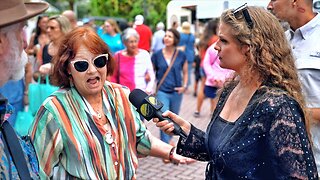 21:33
21:33
Liberty Hangout
2 days agoDemocrats Invite Me Over For Breakfast
22.8K55 -
 2:38:56
2:38:56
FreshandFit
18 hours agoShe Left Her Man To Find A HVM In Miami w/ 6IX9INE
392K179


